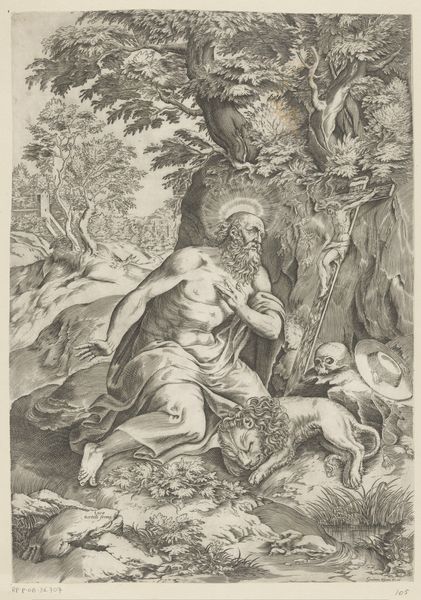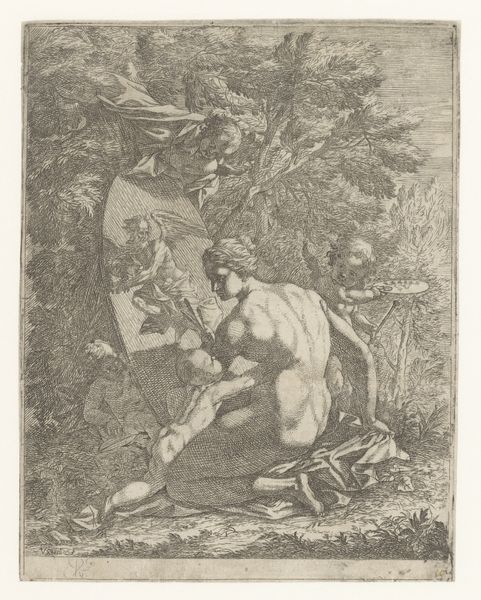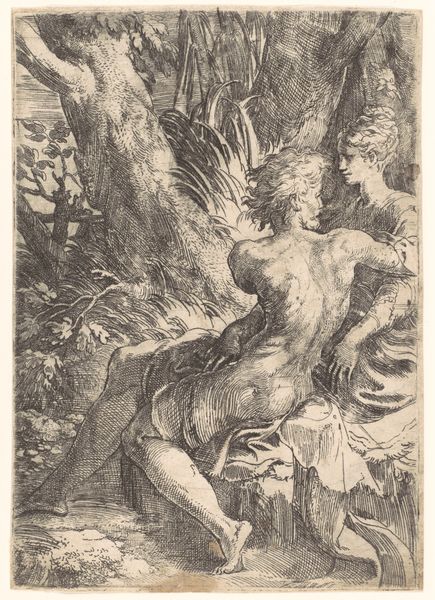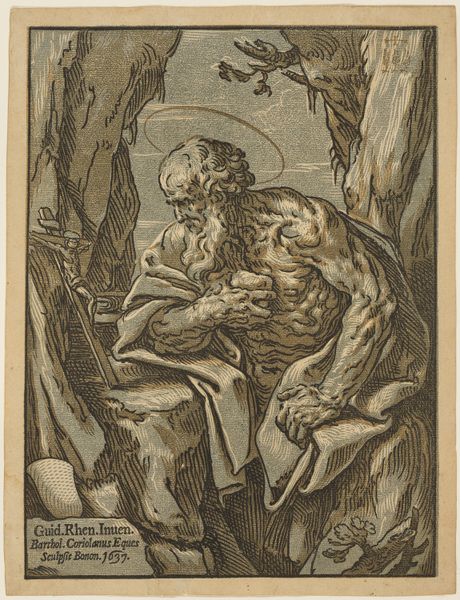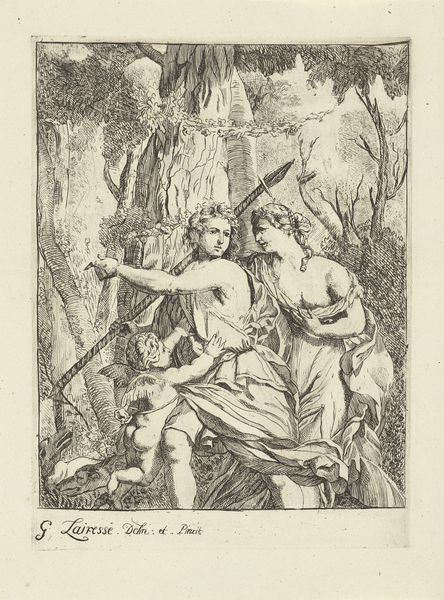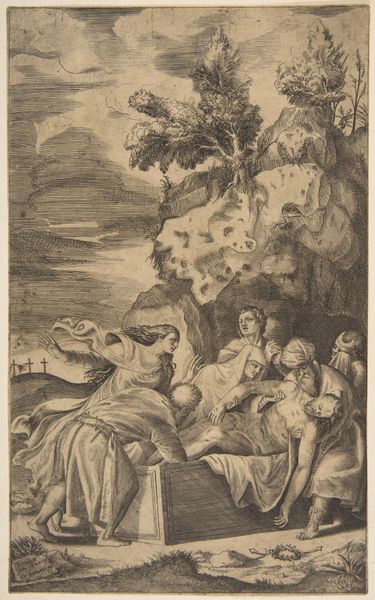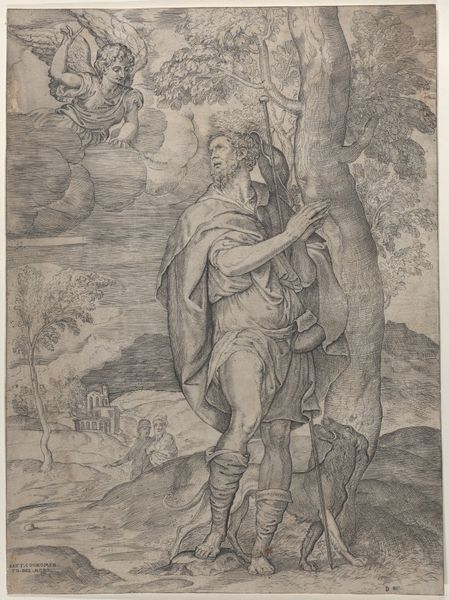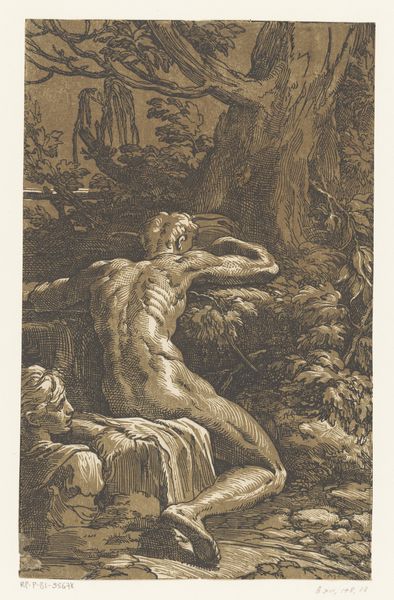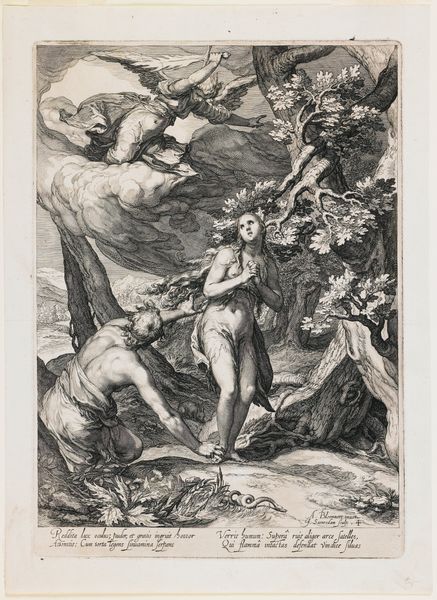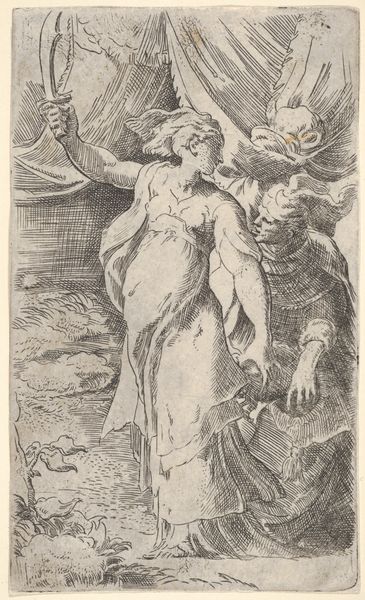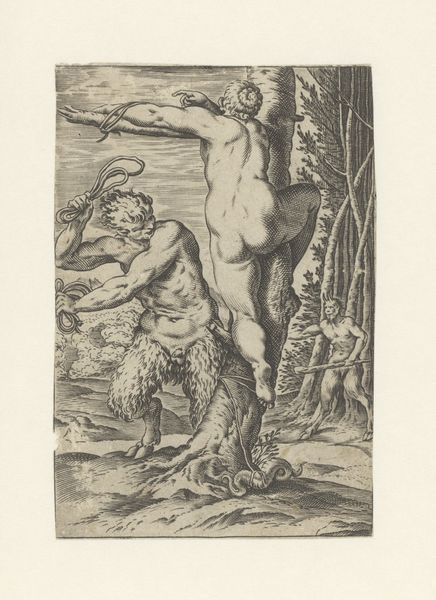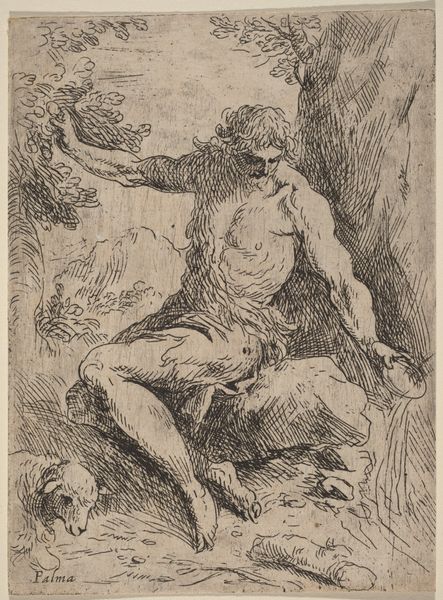
print, intaglio, ink, engraving
#
ink drawing
# print
#
pen sketch
#
intaglio
#
pencil sketch
#
landscape
#
mannerism
#
figuration
#
11_renaissance
#
ink
#
line
#
portrait drawing
#
history-painting
#
engraving
Dimensions: height 536 mm, width 372 mm
Copyright: Rijks Museum: Open Domain
Curator: I'm immediately struck by the solitude of this piece. There's a figure—Jerome, I presume—but the way he’s rendered, all muscle and melancholy amidst this tangled wilderness... It feels profoundly personal. Editor: Indeed. What we’re looking at is an engraving titled *Heilige Hieronymus in de wildernis*, or *Saint Jerome in the Wilderness*. It's attributed to Giuseppe Scolari, placing it somewhere between 1550 and 1600, smack in the middle of the Renaissance's wane and the rise of Mannerism. Curator: Ah, Mannerism. That explains the exaggerated physique, almost theatrical in its intensity. He looks less like a saint and more like a heartbroken Titan. Editor: Precisely. Scolari is playing with established tropes of religious imagery, subtly tweaking them. The setting itself—the wilderness—is not merely a backdrop but an active participant in Jerome’s spiritual drama. Notice how densely packed the engraving is? It suggests the psychological pressure. Curator: Absolutely. The tight lines of the engraving almost vibrate with a kind of repressed energy. Even the lion seems to carry a certain weariness, not just a symbolic guardian, but a fellow sufferer. I get the impression this image might want to represent that the boundary between the animal and the divine blurs when all conventional expectations have been abandoned. Editor: That's an astute reading. Consider the context, too. The Renaissance was a period obsessed with rediscovering classical antiquity, and, it promoted an obsession with the public value of art and power of images. However, it's quite unusual that in this historical frame we found here Saint Jerome completely lonely accompanied only by a single lion. The skull in the bottom right adds a symbolic contemplation. It seems Scolari plays with expectations of the period's powerful families and offers a rather introspective piece that highlights death, reflection, and withdrawal. Curator: This really changes my perception of the piece, adding such a socio-political dimension of criticism and resistance, in a way, to mainstream understandings of that era. Editor: Well, I'm glad we could see Scolari's choice in this light, which perhaps shows us, yet again, how tradition and personality combine to shape a particular understanding.
Comments
No comments
Be the first to comment and join the conversation on the ultimate creative platform.
